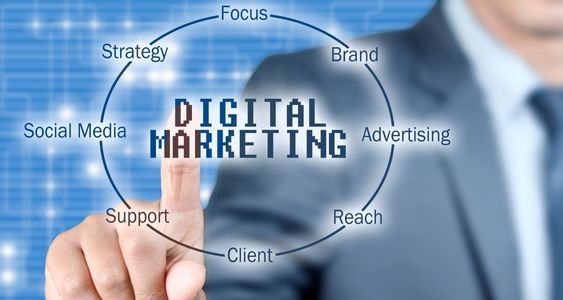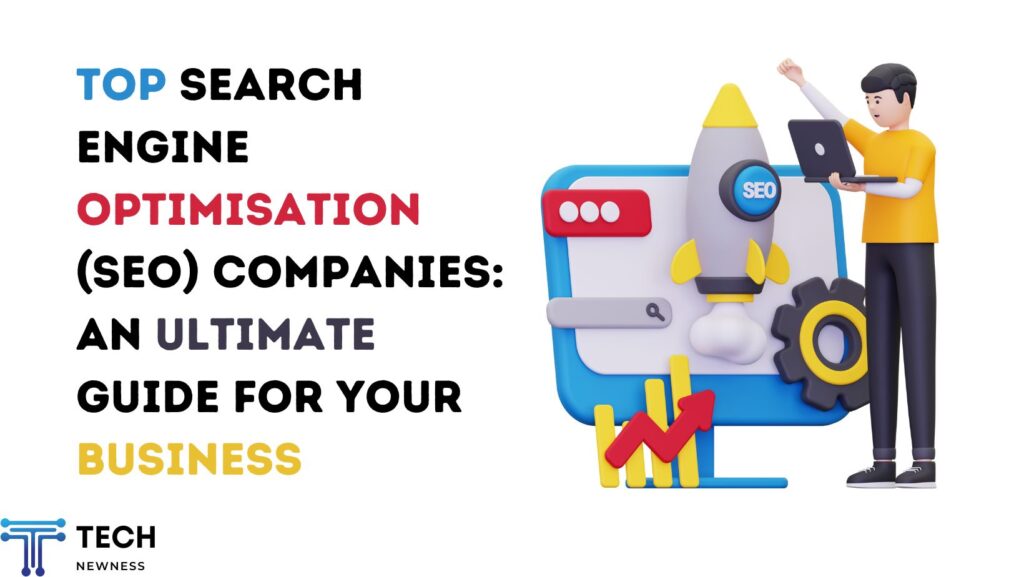Leaders are frequently confronted with pivotal decisions that can shape the trajectory of their organizations. These decisions often involve choosing between two viable options, each with its own set of advantages and challenges. Understanding the nuances of these “versus” scenarios is essential for making informed choices that align with a company’s goals and resources. This article delves into some of the most significant “versus” decisions businesses face today, exploring the contrasts between operating and finance leases, digital and traditional marketing, practical case studies like opting for car covers versus paying for car storage, and the choice between international travel and virtual meetings.
Operating Lease vs. Finance Lease: Choosing the Right Financial Strategy
When it comes to acquiring assets, businesses often grapple with the decision between an operating vs finance lease. Both leasing options offer unique benefits and implications for a company’s financial statements and tax obligations.
Operating Lease
An operating lease is a contract that allows a company to use an asset without ownership. The lease payments are considered operating expenses, and the asset does not appear on the company’s balance sheet. This arrangement is typically short-term and is ideal for assets that may become obsolete quickly, such as technology equipment.
Advantages of Operating Leases:
- Flexibility: Easier to upgrade or replace assets.
- Off-Balance-Sheet Financing: Does not increase liabilities on the balance sheet.
- Tax Benefits: Lease payments are fully deductible as business expenses.
Disadvantages:
- No Ownership: The company does not build equity in the asset.
- Potentially Higher Long-Term Costs: May end up paying more over time compared to purchasing.
Finance Lease
A finance lease, also known as a capital lease, is more akin to a purchase. The lessee assumes the risks and rewards of ownership, and the asset appears on the balance sheet along with a corresponding liability for the lease payments.

Advantages of Finance Leases:
- Ownership Benefits: Opportunity to own the asset at the end of the lease term.
- Depreciation Deductions: The lessee can claim depreciation, offering tax benefits.
- Fixed Payments: Predictable expenses aid in budgeting.
Disadvantages:
- Balance Sheet Impact: Increases both assets and liabilities.
- Less Flexibility: More challenging to upgrade or dispose of the asset before the lease ends.
Making the Decision
The choice between an operating lease and a finance lease hinges on several factors, including the nature of the asset, the company’s financial strategy, tax considerations, and long-term business goals. Companies seeking to maintain flexibility and keep liabilities low may prefer operating leases, while those looking to eventually own the asset and benefit from depreciation might opt for finance leases.
Digital Marketing vs. Traditional Marketing: Crafting an Effective Strategy
Marketing is the lifeblood of business growth, and choosing the right approach is crucial. The debate between digital marketing and traditional marketing centers on reach, engagement, cost, and measurability.
Traditional Marketing
Traditional marketing encompasses methods like print advertising, television and radio commercials, billboards, and direct mail. These channels have been used for decades and are well-established.
Advantages of Traditional Marketing:
- Tangible Materials: Physical items like brochures can leave a lasting impression.
- Broad Reach: Television and radio can reach a wide audience simultaneously.
- Credibility: Established channels often convey trustworthiness.
Disadvantages:
- Higher Costs: Production and placement can be expensive.
- Limited Targeting: Less precise in reaching specific demographics.
- Difficult to Measure: Challenges in tracking the effectiveness of campaigns.
Digital Marketing
Digital marketing utilizes online platforms such as social media, email, search engines, and websites to connect with consumers.

Advantages of Digital Marketing:
- Cost-Effective: Often cheaper than traditional methods.
- Precise Targeting: Ability to target specific audiences based on demographics, interests, and behaviors.
- Measurable Results: Analytics provide real-time data on campaign performance.
- Interactive Engagement: Two-way communication fosters relationships with customers.
Disadvantages:
- Online Noise: High competition for consumer attention.
- Rapid Changes: Constantly evolving platforms require ongoing adaptation.
- Technology Dependence: Requires a certain level of digital literacy and infrastructure.
Making the Decision
The choice between digital and traditional marketing isn’t necessarily exclusive. A blended approach can leverage the strengths of both, depending on the target audience and marketing objectives. For instance, a local business might use traditional methods to reach community members while employing digital tactics to engage a broader audience online.
Thought for 18 seconds
Navigating Critical “Versus” Decisions in Business
In the dynamic world of business, leaders are frequently confronted with pivotal decisions that can shape the trajectory of their organizations. These decisions often involve choosing between two viable options, each with its own set of advantages and challenges. Understanding the nuances of these “versus” scenarios is essential for making informed choices that align with a company’s goals and resources. This article delves into some of the most significant “versus” decisions businesses face today, exploring the contrasts between operating and finance leases, digital and traditional marketing, practical case studies like opting for car covers versus paying for car storage, the choice between international travel and virtual meetings, and additional considerations that influence strategic direction.
Operating Lease vs. Finance Lease: Choosing the Right Financial Strategy
When it comes to acquiring assets, businesses often grapple with the decision between an operating lease and a finance lease. Both leasing options offer unique benefits and implications for a company’s financial statements and tax obligations.
Operating Lease
An operating lease is a contract that allows a company to use an asset without ownership. The lease payments are considered operating expenses, and the asset does not appear on the company’s balance sheet. This arrangement is typically short-term and is ideal for assets that may become obsolete quickly, such as technology equipment.
Advantages of Operating Leases:
- Flexibility: Easier to upgrade or replace assets.
- Off-Balance-Sheet Financing: Does not increase liabilities on the balance sheet.
- Tax Benefits: Lease payments are fully deductible as business expenses.
Disadvantages:
- No Ownership: The company does not build equity in the asset.
- Potentially Higher Long-Term Costs: May end up paying more over time compared to purchasing.
Finance Lease
A finance lease, also known as a capital lease, is more akin to a purchase. The lessee assumes the risks and rewards of ownership, and the asset appears on the balance sheet along with a corresponding liability for the lease payments.
Advantages of Finance Leases:
- Ownership Benefits: Opportunity to own the asset at the end of the lease term.
- Depreciation Deductions: The lessee can claim depreciation, offering tax benefits.
- Fixed Payments: Predictable expenses aid in budgeting.
Disadvantages:
- Balance Sheet Impact: Increases both assets and liabilities.
- Less Flexibility: More challenging to upgrade or dispose of the asset before the lease ends.
Making the Decision
The choice between an operating lease and a finance lease hinges on several factors, including the nature of the asset, the company’s financial strategy, tax considerations, and long-term business goals. Companies seeking to maintain flexibility and keep liabilities low may prefer operating leases, while those looking to eventually own the asset and benefit from depreciation might opt for finance leases.
Digital Marketing vs. Traditional Marketing: Crafting an Effective Strategy
Marketing is the lifeblood of business growth, and choosing the right approach is crucial. The debate between digital marketing and traditional marketing centers on reach, engagement, cost, and measurability.
Traditional Marketing
Traditional marketing encompasses methods like print advertising, television and radio commercials, billboards, and direct mail. These channels have been used for decades and are well-established.
Advantages of Traditional Marketing:
- Tangible Materials: Physical items like brochures can leave a lasting impression.
- Broad Reach: Television and radio can reach a wide audience simultaneously.
- Credibility: Established channels often convey trustworthiness.
Disadvantages:
- Higher Costs: Production and placement can be expensive.
- Limited Targeting: Less precise in reaching specific demographics.
- Difficult to Measure: Challenges in tracking the effectiveness of campaigns.
Digital Marketing
Digital marketing utilizes online platforms such as social media, email, search engines, and websites to connect with consumers.
Advantages of Digital Marketing:
- Cost-Effective: Often cheaper than traditional methods.
- Precise Targeting: Ability to target specific audiences based on demographics, interests, and behaviors.
- Measurable Results: Analytics provide real-time data on campaign performance.
- Interactive Engagement: Two-way communication fosters relationships with customers.
Disadvantages:
- Online Noise: High competition for consumer attention.
- Rapid Changes: Constantly evolving platforms require ongoing adaptation.
- Technology Dependence: Requires a certain level of digital literacy and infrastructure.
Making the Decision
The choice between digital and traditional marketing isn’t necessarily exclusive. A blended approach can leverage the strengths of both, depending on the target audience and marketing objectives. For instance, a local business might use traditional methods to reach community members while employing digital tactics to engage a broader audience online.
Case Study: Car Covers vs. Paying for Car Storage
Businesses and individuals alike often face practical decisions that balance cost, convenience, and asset protection. In the automotive sector, one such decision is choosing between investing in a car cover or paying for car storage.
Car Covers
A car cover is a protective covering designed to shield a vehicle from environmental elements like dust, rain, sunlight, and debris.

Advantages of Car Covers:
- Cost-Effective: Significantly less expensive than monthly storage fees.
- Convenience: Easily accessible and portable.
- Protection: Guards against minor scratches, fading, and weather-related damage.
Disadvantages:
- Limited Security: Does not protect against theft or vandalism.
- Partial Protection: May not fully prevent moisture buildup or severe weather damage.
- Wear and Tear: Over time, covers may deteriorate and require replacement.
Paying for Car Storage
Car storage involves renting a space in a secure facility to store the vehicle, often offering climate control and enhanced security features.
Advantages of Car Storage:
- Comprehensive Protection: Shields the vehicle from weather, theft, and vandalism.
- Climate Control: Maintains optimal conditions to prevent rust and mechanical issues.
- Peace of Mind: Knowing the vehicle is secure in a dedicated facility.
Disadvantages:
- Higher Cost: Ongoing monthly fees can add up over time.
- Accessibility: May have limited access hours or require travel to the facility.
- Long-Term Commitment: Contracts may require minimum storage periods.
Making the Decision
For businesses managing fleet vehicles or individuals with valuable cars, the choice depends on the level of protection needed and budget considerations. A company with expensive or rare vehicles might opt for storage to preserve asset value, while another might find car covers sufficient for their needs.
International Business Travel vs. Virtual Meetings: Bridging the Distance
Globalization has expanded business opportunities across borders, but it also presents the challenge of connecting with international partners. The decision between going abroad for business and utilizing virtual meetings like Zoom involves weighing personal interaction against efficiency and cost.
Going Abroad for Business
Traveling to meet clients or partners in person has long been the standard for international business dealings.
Advantages of International Travel:
- Personal Connection: Face-to-face meetings build stronger relationships and trust.
- Cultural Immersion: Understanding local customs and business practices firsthand.
- Opportunities for Networking: Chance encounters and social events can lead to new connections.
Disadvantages:
- High Costs: Expenses for flights, accommodations, and meals can be substantial.
- Time-Consuming: Travel time and jet lag can reduce productivity.
- Health and Safety Risks: Exposure to travel-related health issues or geopolitical instability.
Virtual Meetings
Platforms like Zoom, Microsoft Teams, and Google Meet enable real-time communication without the need for travel.
Advantages of Virtual Meetings:
- Cost Savings: Eliminates travel expenses.
- Efficiency: Meetings can be scheduled with minimal notice and no downtime.
- Flexibility: Easily accommodate participants from multiple locations.
Disadvantages:
- Limited Personal Interaction: Harder to build rapport and read body language.
- Technical Issues: Connectivity problems can disrupt meetings.
- Time Zone Challenges: Coordinating across different time zones can be inconvenient.
Making the Decision
The choice between international travel and virtual meetings depends on the nature of the business relationship and the objectives of the interaction. Initial meetings or negotiations of significant deals may benefit from personal contact, while routine updates and follow-ups can be effectively managed virtually. Companies might adopt a hybrid approach, reserving travel for critical engagements and leveraging virtual tools for regular communication.
In-House Production vs. Outsourcing: Balancing Control and Efficiency
Another critical decision businesses face is whether to keep production and services in-house or to outsource them to external providers. In-house production allows companies to maintain full control over the quality, processes, and intellectual property associated with their products or services. It fosters a deep understanding of the core competencies and can lead to greater innovation due to closer collaboration among internal teams. However, it often requires significant investment in facilities, equipment, and talent, which can strain resources, especially for smaller businesses.
On the other hand, outsourcing can offer cost savings by leveraging the expertise and economies of scale of specialized providers. It allows businesses to be more flexible and adapt quickly to changing market demands without the burden of managing every aspect of production. However, outsourcing can lead to challenges such as reduced control over quality, potential communication barriers, and risks associated with sharing proprietary information. The decision between in-house production and outsourcing hinges on factors like cost considerations, strategic priorities, and the importance of maintaining control over critical processes.
Innovation vs. Risk Management: Driving Growth While Safeguarding Stability
Businesses constantly grapple with the balance between pursuing innovation and managing risks. Innovation is essential for growth, competitiveness, and responding to changing customer needs. It can open up new markets, improve efficiency, and differentiate a company from its competitors. However, innovation often involves venturing into untested territories, which can carry significant risks such as financial loss, operational disruptions, or damage to reputation if new initiatives fail.

Conversely, a strong focus on risk management emphasizes caution, stability, and the safeguarding of existing assets and market positions. While this approach can protect a company from potential pitfalls, an excessive aversion to risk may lead to missed opportunities and stagnation. The key for businesses is to find an optimal balance that allows them to innovate effectively while implementing measures to mitigate associated risks. This balance requires careful planning, robust analysis, and a culture that encourages calculated risk-taking.
Employee Satisfaction vs. Cost Reduction: Investing in People or Cutting Expenses
Companies often face the dilemma of prioritizing employee satisfaction versus focusing on cost reduction. Investing in employee well-being, professional development, and creating a positive work environment can lead to increased productivity, higher retention rates, and a stronger employer brand. Satisfied employees are more likely to be engaged, motivated, and contribute to the company’s success.
However, these investments come with costs that can impact the company’s bottom line, especially in the short term. On the flip side, aggressive cost-cutting measures, such as reducing benefits, limiting training opportunities, or downsizing, can improve financial performance in the immediate term but may lead to decreased morale, loss of talent, and damage to the company’s reputation over time. Businesses must carefully consider how to balance financial efficiency with the need to attract, retain, and motivate their workforce, recognizing that employees are a critical asset in achieving long-term success.
Case Study: Car Covers vs. Paying for Car Storage
Businesses and individuals alike often face practical decisions that balance cost, convenience, and asset protection. In the automotive sector, one such decision is choosing between investing in a car cover or paying for car storage.
Car Covers
A car cover is a protective covering designed to shield a vehicle from environmental elements like dust, rain, sunlight, and debris.
Advantages of Car Covers:
- Cost-Effective: Significantly less expensive than monthly storage fees.
- Convenience: Easily accessible and portable.
- Protection: Guards against minor scratches, fading, and weather-related damage.
Disadvantages:
- Limited Security: Does not protect against theft or vandalism.
- Partial Protection: May not fully prevent moisture buildup or severe weather damage.
- Wear and Tear: Over time, covers may deteriorate and require replacement.
Paying for Car Storage
Car storage involves renting a space in a secure facility to store the vehicle, often offering climate control and enhanced security features.
Advantages of Car Storage:
- Comprehensive Protection: Shields the vehicle from weather, theft, and vandalism.
- Climate Control: Maintains optimal conditions to prevent rust and mechanical issues.
- Peace of Mind: Knowing the vehicle is secure in a dedicated facility.
Disadvantages:
- Higher Cost: Ongoing monthly fees can add up over time.
- Accessibility: May have limited access hours or require travel to the facility.
- Long-Term Commitment: Contracts may require minimum storage periods.
Making the Decision
For businesses managing fleet vehicles or individuals with valuable cars, the choice depends on the level of protection needed and budget considerations. A company with expensive or rare vehicles might opt for storage to preserve asset value, while another might find car covers sufficient for their needs.
International Business Travel vs. Virtual Meetings: Bridging the Distance
Globalization has expanded business opportunities across borders, but it also presents the challenge of connecting with international partners. The decision between going abroad for business and utilizing virtual meetings like Zoom involves weighing personal interaction against efficiency and cost.
Going Abroad for Business
Traveling to meet clients or partners in person has long been the standard for international business dealings.
Advantages of International Travel:
- Personal Connection: Face-to-face meetings build stronger relationships and trust.
- Cultural Immersion: Understanding local customs and business practices firsthand.
- Opportunities for Networking: Chance encounters and social events can lead to new connections.
Disadvantages:
- High Costs: Expenses for flights, accommodations, and meals can be substantial.
- Time-Consuming: Travel time and jet lag can reduce productivity.
- Health and Safety Risks: Exposure to travel-related health issues or geopolitical instability.
Virtual Meetings
Platforms like Zoom, Microsoft Teams, and Google Meet enable real-time communication without the need for travel.
Advantages of Virtual Meetings:
- Cost Savings: Eliminates travel expenses.
- Efficiency: Meetings can be scheduled with minimal notice and no downtime.
- Flexibility: Easily accommodate participants from multiple locations.
Disadvantages:
- Limited Personal Interaction: Harder to build rapport and read body language.
- Technical Issues: Connectivity problems can disrupt meetings.
- Time Zone Challenges: Coordinating across different time zones can be inconvenient.
Making the Decision
The choice between international travel and virtual meetings depends on the nature of the business relationship and the objectives of the interaction. Initial meetings or negotiations of significant deals may benefit from personal contact, while routine updates and follow-ups can be effectively managed virtually. Companies might adopt a hybrid approach, reserving travel for critical engagements and leveraging virtual tools for regular communication.
Strategic Decision-Making in Business
The “versus” decisions in business are rarely clear-cut; they require careful analysis of the specific context, goals, and resources of the company. Whether it’s choosing between an operating lease and a finance lease, deciding on digital versus traditional marketing strategies, selecting car covers over paying for car storage, or opting for international travel versus virtual meetings, each decision carries implications that can significantly impact the organization’s success.
Businesses must weigh the pros and cons of each option, considering both short-term benefits and long-term consequences. By adopting a strategic approach to these decisions, companies can optimize their operations, maximize return on investment, and position themselves for sustained growth in an ever-changing business landscape.
Ultimately, the key lies in flexibility and adaptability. Embracing a mindset that is open to combining different approaches—such as blending digital and traditional marketing or integrating virtual meetings with occasional in-person visits—can provide a competitive edge. In a world where change is the only constant, the ability to navigate these pivotal “versus” decisions with insight and agility is what sets successful businesses apart.
See Also: Top 5 Things to Note if You Are Seeking Litigation Funding for Your Client





